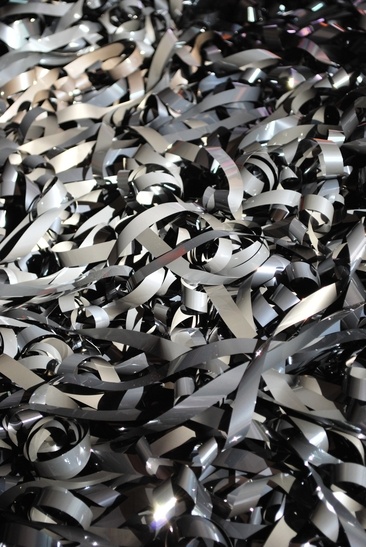This is the fourth part of our posts about the business of producing business video.
Now that the Production phase is over and the script has been captured onto some medium (most likely a digital one), we move into what some consider to be the most creative and interesting part of production: Post-Production. And for some, Post as it’s known, is like watching paint dry – so to each his own.
In the old-school days, Post-Production largely meant Editing. Film (almost always negative film) would be processed at a lab and then the lab would strike or create a work print from the camera negative. This work print would be a pretty primitive looking bit of film, some of it overexposed, some underexposed, but the editor would take all that raw footage on the work print (the dailies) and chop it up into smaller pieces and put it back together into a more finished form with pieces of clear splicing tape. We’re not kidding about any of this, by the way! Editing used to be a very analog and slow process. Special effects and titles and animations all had to be created in-camera. Things were pretty primitive back in the day.
Fast-forward to about… 20 years ago and things were changing. For one thing, this new-fangled digital editing thing had become reality – it was called Non-Linear Editing (NLE) and it meant that a computer could be used to edit the film. It was fast. It was non-destructive, which simply meant that things like work prints no longer had to be made and you could change your mind about an edit in the blink of an eye. The NLE software got better and faster and added more features and today’s NLE provides editors with much greater control over their edits. But, it also provides that same individual the ability to add effects, titles, simple animations, simple color and exposure changes all within an editing program. In other words, the range of capabilities created by new technology has dramatically increased an editor’s ability to control the final output of a video.
Today, Post means a variety of activities, the largest of which still is editing for live action video (not true of animation). But, there is so much more…
- Audio Finishing
- Audio mixing – where all the sound tracks are volume leveled, cleaned up for noise and unwanted sounds, split into stereo or five channels, and adjusted to the particular tastes of the director and the mixer
- Foley – in short, sound effects: footsteps, door closings, car backfires, etc.
- ADR – Automatic Dialogue Replacement – there’s nothing especially automatic about it – an actor repeats a line, in a recording studio, that didn’t record very well, until she matches her original delivery.
- Color Correction – before the digital age this was largely accomplished with lighting and camera filtration. With today’s HD and beyond, digital capture technologies, Color Correction has become a sophisticated, creative skill set unto itself. Modern Color Correction software and hardware tools enable savvy individuals control over every pixel in a digital frame. If the red in a shirt is the wrong shade, it can be adjusted throughout a scene or the entire video. If there’s too little light on an actor’s face, the exposure for that element alone can be fixed. Modern Color Correction is nothing short of miraculous! For more info, check out this post by Nathan on his color correcting technique.
Animation – when Walt Disney Studios was producing amazing and beautiful feature-length classics like Lady and the Tramp, Cinderella and Fantasia, the state-of-the art was something called Cell Animation, where each frame or cell was hand drawn by an artist who possessed unparalleled control and skill. Those films are gorgeous to behold, but they took forever to make when you figure that at 24 frames per second, a ninety-minute film required 129,600 finished frames to be produced by hand! Yeah, that’d take awhile. Today, there are software programs like After Affects, Nuke, Studio 3D Max, Maya, Cinema 4D and so on, that make what the cell animators did look a bit like child’s play. In some cases, these apps don’t actually save a lot of time over their forbears, but they make some things possible that were far too difficult to create in the past.
- For business videos, animation might be used in an explainer video to quickly demonstrate a process that might be prohibitively expensive to create in live action. And, sometimes a mixture of graphics and drawings can produce mind-bogglingly compelling, visual story-telling work.
- Music Composition – there was a time that even for the simplest of business films, an entire score might be composed for musicians to record in a studio. Then came the era of music libraries – a collection of recordings, often on CDs – that captured various styles, moods and instrumentation. While those libraries can still be found, and music from them may be used as a needle drop, pre-recorded music used in a project, more often than not, those libraries are now held online in huge repositories. They are sold in various formats for a fraction of the price of an original score or a music library recording. The low prices are due, in part, to the technologies used to record them. While some stock music may be recorded with MIDI devices that convert analog sounds into digital information, some composers combine actual instruments into their compositions. The net result is a stunning array of new sounds and styles that satisfy the pickiest of producers.
There are other areas of Post we’ve not touched on here, because they’re less relevant to the production of business video, but rest assured, modern post techniques can make your finished video look unbelievable!



